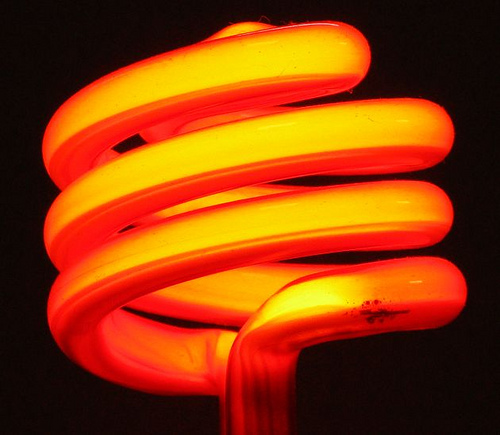
Every year we see an increase in the interest people have in energy efficient products. Among such products is the CFL (Compact Fluorescent Lamp), which is produced to replace, and uses less energy than, the standard incandescent light bulb. Some might worry that as a result of the CFL not consuming as much energy as the incandescent bulb, the options in brightness as well as color would be fewer. Once an understanding of the CFL color spectrum is gained, you will realize this is far from the truth.
Unlike an incandescent bulb, the quality of light emitted from CFLs depends on how they are built, with the majority of CFLs having the color temperature marked on it in measurements of kelvins. For example, a 5000k fluorescent bulbs would give off a cool white daylight color as opposed to one with a temperature of 2700K, which would emit a warm glow. This means the higher the measure in kelvins, the bluer in shade the light coming from the CFL. Different manufacturers have varying names for bulbs of the same temperature, so it is important to base the color you chose on the temperature as opposed to a title of “cool” or “daylight”.
In addition to the temperature in Kelvins, some companies also include a 3-digit code specifying the color rendering index (CFL CRI). The first number stands for the CRI calculated in percents of ten, with the following two digits are taken from the temperature in kelvins. For instance, if a CFL has a CRI of 83 and color temperature measuring 2700K, the 3-digit code would be 827. Bulbs with a color rendering index of about 80 are of good quality for the average consumer, appearing “white” in color. Fluorescent Colored Bulbs come in all kinds of colors: from red, orange and yellow to pink, blue and green. Choosing the right lamp for your fixture should be no problem now that you know where to start, as well as where to finish.
